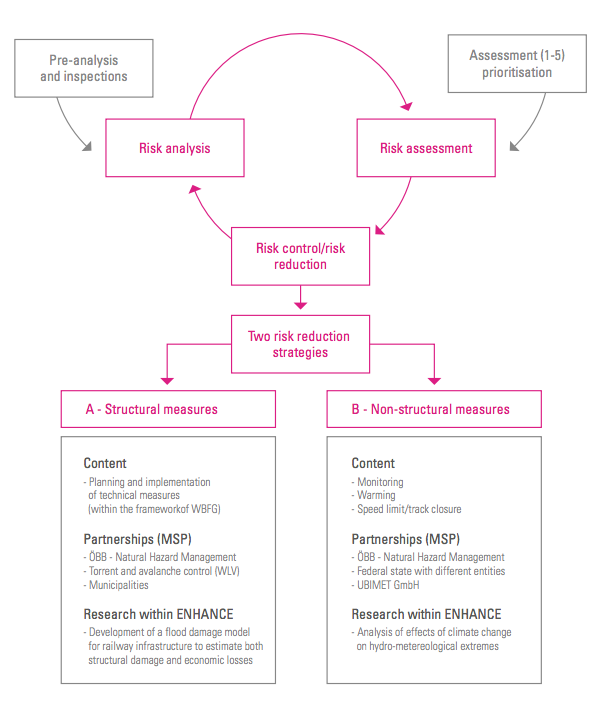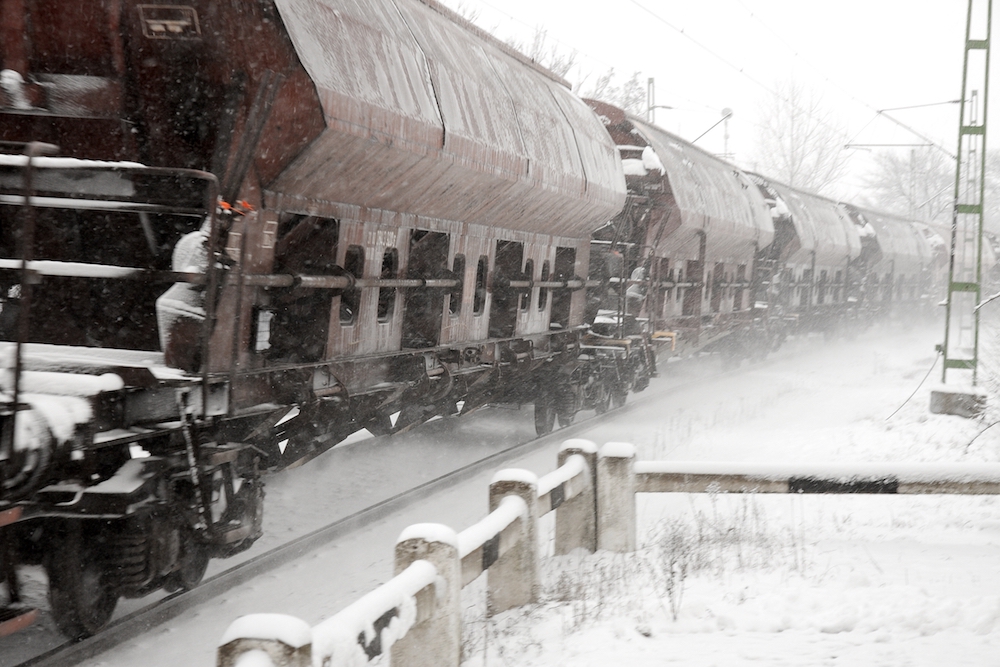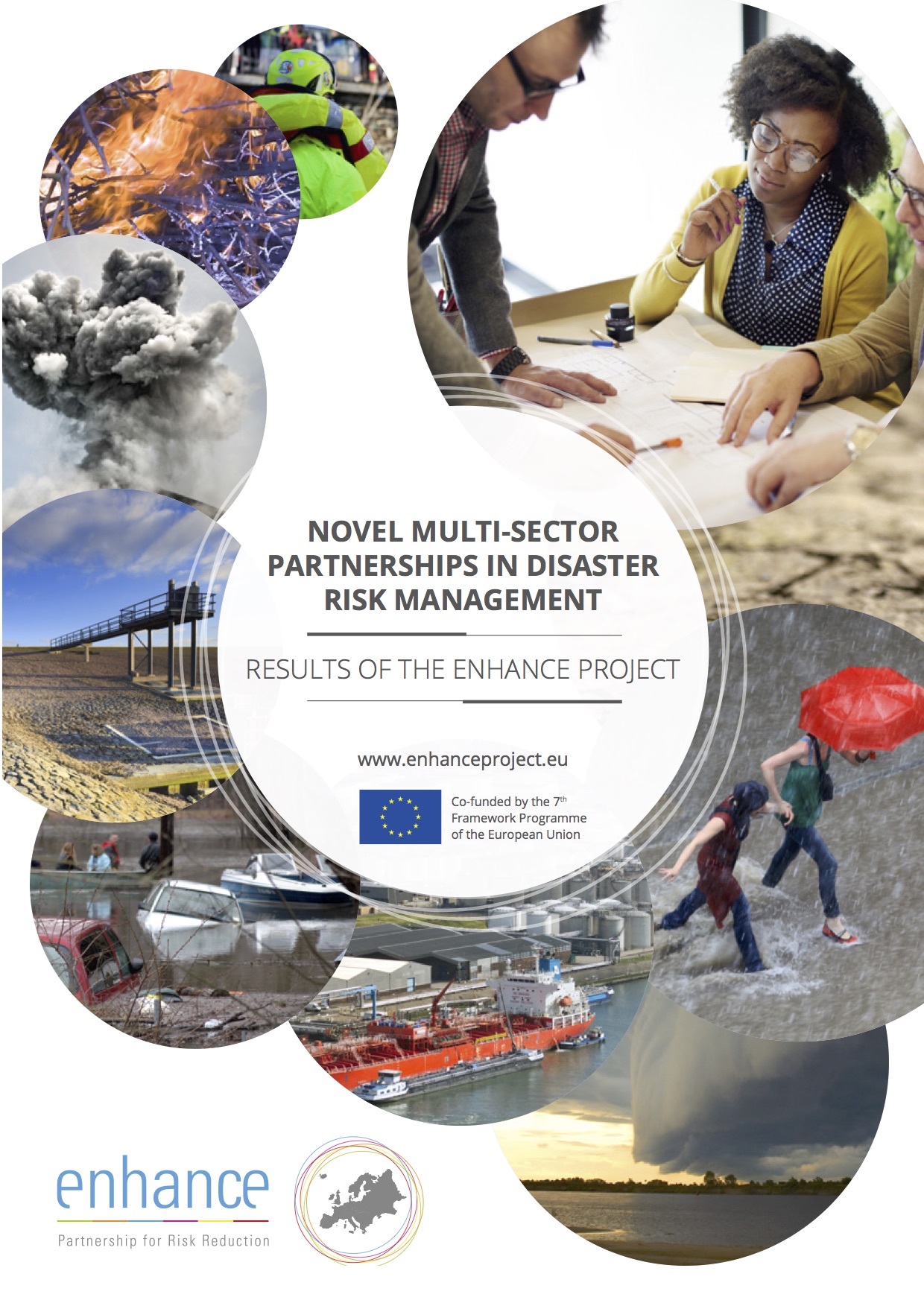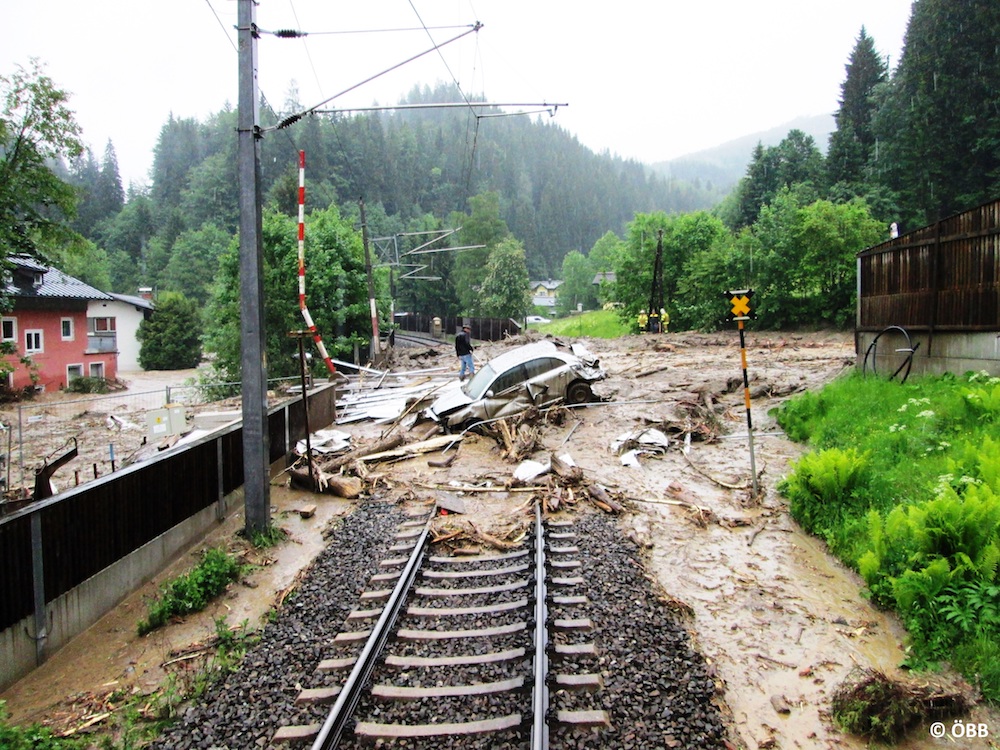 Slider / Stories / User Stories
Slider / Stories / User Stories
The Austrian Alps host a beautiful landscape of mountains, valleys and rivers. Although being ideal for outdoor activities, it implies challenging engineering tasks, e.g., for the construction and operation of the railway network. Given its central position in Europe, the Austrian railway network plays a key role for the transportation of passengers and freight, with growing economic perspectives.
However, torrents, mudflows, rock falls, avalanches and floods lead to regular disruptions of railway tracks, causing large economic losses and temporary closures of line sections, as railway tracks and bridges can be washed away or severely damaged.
The Austrian Railway Infrastructure AG (ÖBB Infra AG), along with partners from civil society, the private sector and the government, are left with the challenging mandate to assess risks, take preventive measures, and ensure the safe and continuous operation of the network. Although done with dedication, the risk partnership is challenged by mixed information exchange and cost-sharing divergence.
Alpine railways are key for freight and travellers transport and subject to multi-hazard risks. In August 2005, floods blocked a section of an Alpine railway, it took €30 billion and 100 days to get it back in operation.
Novel multi-sector partnerships in disaster risk management - Results of the ENHANCE Project, p. 325
Improvement of structural and non-structural risk management
‘Building railway transport resilience to alpine hazards’ was one of the ten cases of the 4-year ENHANCE project funded by the European Union, which core objective was to develop novel ways to enhance society’s resilience to natural hazards.
 To this end, ENHANCE partners analyzed and reinforced existing risk management partnerships. In the case of the Austrian railways, this included partnerships at different levels for both structural (e.g. cost-sharing) and non-structural measures (e.g. information exchange and early warning systems). The partnerships were evaluated in terms of their social, human, financial, and political capitals. To support strategic risk management in terms of structural measures, a damage model was developed specifically for railway infrastructure and applied in cooperation with ÖBB Infra AG. Moreover, partners assessed the influence of climate change on the frequency of so-called critical meteorological conditions (CMC). CMCs are severe meteorological conditions that potentially affect railway operation on a larger scale. Results show that the risk from CMCs could substantially increase in future.
To this end, ENHANCE partners analyzed and reinforced existing risk management partnerships. In the case of the Austrian railways, this included partnerships at different levels for both structural (e.g. cost-sharing) and non-structural measures (e.g. information exchange and early warning systems). The partnerships were evaluated in terms of their social, human, financial, and political capitals. To support strategic risk management in terms of structural measures, a damage model was developed specifically for railway infrastructure and applied in cooperation with ÖBB Infra AG. Moreover, partners assessed the influence of climate change on the frequency of so-called critical meteorological conditions (CMC). CMCs are severe meteorological conditions that potentially affect railway operation on a larger scale. Results show that the risk from CMCs could substantially increase in future.
By analysing existing processes and combining them with new risk projections, ENHANCE provided a robust framework to secure current and future resilience in the Alpine railway lines.
ENHANCE facilitated a stakeholder driven approach, where stakeholders in risk management together with researchers jointly sought to improve multi-sector partnerships in a participatory way.
IN A NUTSHELL
- What: Building railway transport resilience to alpine hazards
- Where: Austrian Alps
- Project: ENHANCE – www.enhanceproject.eu
- Contact Person: Prof. Dr. Annegret Thieken (thieken@uni-potsdam.de)
- The Book: discover all the ENHANCE case studies (pdf) – www.enhanceproject.eu/media_corner/15
- Keywords: Risk Management, Natural Hazards, Resilience, Transport
MORE RESOURCES:
- Kellermann, P., Schöbel, A., Kundela, G., & Thieken, A. H. (2015). Estimating flood damage to railway infrastructure–the case study of the March River flood in 2006 at the Austrian Northern Railway. Natural Hazards and Earth System Sciences, 15(11), 2485-2496.
- Kellermann, P., Bubeck, P., Kundela, G., Dosio, A., & Thieken, A. H. (2016). Frequency Analysis of Critical Meteorological Conditions in a Changing Climate—Assessing Future Implications for Railway Transportation in Austria. Climate, 4(2), 25.
- Kellermann, P., C. Schönberger, A.H. Thieken (2016): Large-scale application of the flood damage model Railway Infrastructure Loss (RAIL). Natural Hazards and Earth System Sciences, 16, 2357-2371.



